Invited Speakers
Rommie Amaro
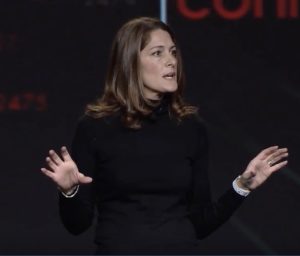
University of California, San Diego
Rommie E. Amaro is a Professor and Shuler Scholar in the Department of Chemistry and Biochemistry at the University of California, San Diego. She received her B.S. in Chemical Engineering (1999) from the University of Illinois at Urbana-Champaign and subsequently worked for two years for Kraft Foods, Inc. as an Associate Research Engineer. She left Kraft to pursue her Ph.D. (in Chemistry, 2005) at the University of Illinois at Urbana-Champaign, under Prof. Zaida Luthey-Schulten. Rommie was a NIH postdoctoral fellow with Prof. J. Andrew McCammon at the University of California, San Diego from 2005-2009, and she started her independent research program in 2009 at the University of California, Irvine in the Department of Pharmaceutical Sciences. In 2012 Rommie moved her lab to the Department of Chemistry and Biochemistry at the University of California, San Diego. She is the Director of the NIH P41 National Biomedical Computation Resource and a co-Director of the NIH U01 Drug Design Data Resource. Rommie is the recipient of an NIH New Innovator Award, the Presidential Early Career Award for Scientists and Engineers, the ACS COMP OpenEye Outstanding Junior Faculty Award, the ACS Kavli Foundation Emerging Leader in Chemistry National Lecturer, and the 2016 Corwin Hansch Award.
Rommie's scientific interests lie at the intersection of computer-aided drug discovery and biophysical simulation methods. She has a long-standing interest in incorporating structural and dynamical information derived from all-atom molecular dynamics simulations in drug discovery programs, and has worked in a variety of disease areas, including infectious diseases and cancer. Her scientific vision revolves around the continued development of molecular dynamics simulations in drug discovery programs, particularly in expanding the range and complexity of molecular constituents represented in such simulations, and novel multiscale methods for elucidating their time dependent dynamics.
Computational Biophysics in the Petascale Computing Era
Advances in structural, chemical, and biophysical data acquisition (e.g., protein structures via X-ray crystallography and near atomic cryoEM, isothermal calorimetry, etc.), coupled with the continued exponential growth in computing power and advances in the underlying algorithms are opening a new era for the simulation of biological systems at the molecular level, and at scales never before reached. In this talk I will discuss how the BlueWaters Petascale computing architecture forever altered the landscape and potential of computational biophysics. In particular, new and emerging capabilities for multiscale dynamic simulations that cross spatial scales from the molecular (angstrom) to cellular ultrastructure (near micron), and temporal scales from the picoseconds of macromolecular dynamics to the physiologically important time scales of organelles and cells (milliseconds to seconds) are now possible. These efforts are driven by the outstanding and persistent advances in peta- and exascale computing and availability of multimodal biological datasets, as well as by gaps in current abilities to connect across scales where it is already clear that new approaches will result in novel fundamental understanding of biological phenomena or open new therapeutic avenues.
Watch the presentation | View the presentation slides (PDF)
Susan Bates
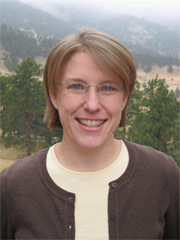
National Center for Atmospheric Research
Susan Bates is a scientist in the Climate Change Research Section of the Climate and Global Dynamics Laboratory at the National Center for Atmospheric Research in Boulder, CO. She has a broad physical science background having received her Ph.D. in Climate Dynamics in 2006 from the Center for Ocean-Land-Atmosphere Studies at George Mason University, her M.S. in Oceanography in 1999 from Texas A&M University, and her B.S. in Geology in 1995 from Duke University. Susan is one of the Community Earth System Model (CESM) Climate Change and Variability Working Group (CVCWG) co-chairs and the Project Manager for the NCAR-DOE Cooperative Agreement To Analyze variabiLity, change and predictabilitY in the earth SysTem (CATALYST) Project. In these roles, she manages the CATALYST group's computing allocations at NSF and DOE supercomputing centers, coordinates collaborative research resulting from these simulations, and coordinates and supervises the running of simulations and post-processing and publishing of the resulting data. Susan is a member of the Science and Engineering Team Advisory Committee (SETAC) for the Blue Waters Project.
Susan's research interests lie in the area of large-scale air-sea interaction, the role of the ocean in climate, and the impacts of a warming climate on high impact events. Her recent research topics include global and regional sea level rise and tropical and mid-latitude storms, including how they may change in the future and how underlying sea surface temperature may affect their number and intensity. She has been actively involved in preparing high resolution versions of the CESM for different computing platforms and in designing and analyzing resulting simulations.
Susan is also active in science education and outreach. She has been a member of the organizing committee for the CESM tutorial almost every year since its inception in 2010 and chaired the committee in 2013. She recently became one of AGU's Voices for Science policy advocates and will engage in policy activities throughout this next year.
Blue Waters Enabled Advances in the Fields of Atmospheric Science, Climate, and Weather
For the past five years, the Blue Waters Project has provided an invaluable platform for research in the fields of atmospheric science, climate, and weather. The computationally intensive numerical models running on Blue Waters push the limits of model resolution and/or capability in first-of-their-kind simulations. These projects span the full breadth of spatial and temporal scales, from discrete events such as tropical cyclones and tornadoes, to regional analyses of extreme events, to global-scale research on the effects of climate change. In this talk, we will explore progress in these research areas enabled by Blue Waters and demonstrate why this particular resource has been so important.
Watch the presentation | View the presentation slides (PDF)
Lizanne DeStefano
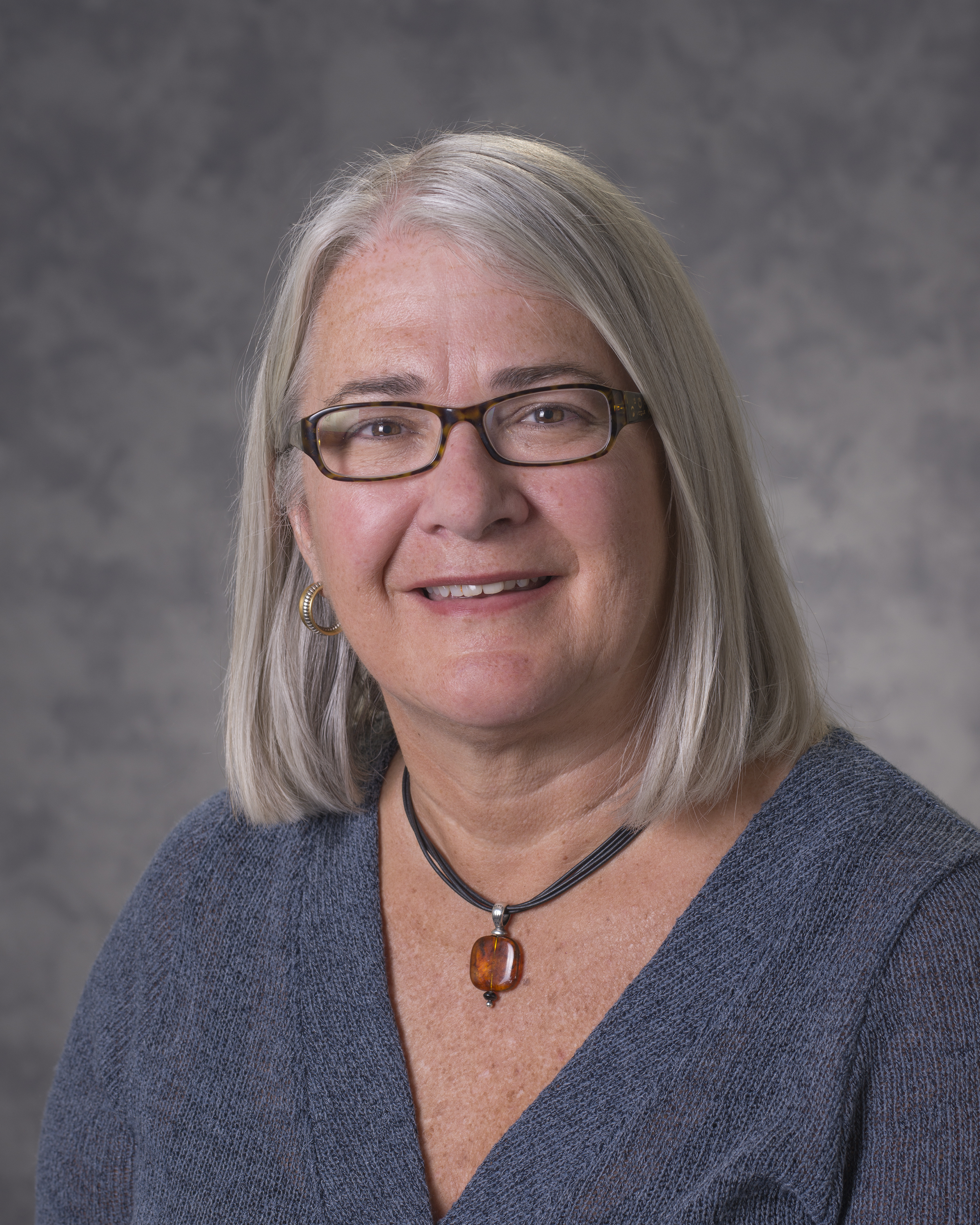
Georgia Institute of Technology
Lizanne DeStefano received her Ph.D. in educational psychology from the University of Pittsburgh in 1986. Dr. DeStefano is a former special education teacher, and trained and practiced as a clinical and school psychologist. She received her B.S. in Physiological Psychology and Statistics, her M.Ed. in Special Education.
Currently, Dr. DeStefano is the director of Center for Education Integrating Science, Mathematics, and Computing (CEISMC) and professor of Psychology at Georgia Institute of Technology. Her research interests include the evaluation and sustainability of innovative STEM, as well as other, educational programs; multi-site initiatives; and programs serving special populations, such as students with disabilities or those at risk for academic failure.
Dr. DeStefano's work has been funded by numerous agencies and foundations, including the National Science Foundation, the National Institutes of Health; and the U.S. Department of Education. Dr. DeStefano provides evaluation services for numerous STEM programs, including a number of multi-institutional centers/programs. In addition to serving as the evaluator for Center for Brains, Minds, and Machines (CBMM), she co-directs education and evaluation activities for the NSF-funded Emergent Behaviors of Integrated Cellular Systems Science and Technology Center and serves as the evaluator for the Center for Sustainable Nantechnology and XSEDE's (Extreme Science and Engineering Discovery Environment) Technology, Education, Outreach, and Services (TEOS). DeStefano evaluates numerous other NSF-funded projects, including: the Blue Waters Supercomputer educational programs; Program in Digital Forensics; the Children's Environmental Health Center's Community Outreach and Translation Core (COTC); and Centrality of Advanced Digitally ENabled Science (CADENS), a project that uses data visualization of computational data to create educational materials. Dr. DeStefano also evaluates other NSF-funded programs, including a number of REU (Research Experience for Undergraduates) sites, Nano@Illinois RET (Research Experience for Teachers), two IGERTs (Integrative Graduate Education and Research Traineeship), and an S-STEM grant (the Merit Fellows Scholarship Program).
Evaluation the Effectiveness and Impact of Advanced Cyber Infrastructure: Lessons Learned from Blue Waters and XSEDE
This interactive session provides an overview of innovative evaluation methods and metrics that are relevant to cyberinfrastructure projects. Examples of instruments and data visualizations will be shared. Lessons learned from recent evaluations will be discussed. Participants will be invited to present their evaluation challenges, needs and opportunities.
Watch the presentation | View the presentation slides (PDF)
Doug Kothe
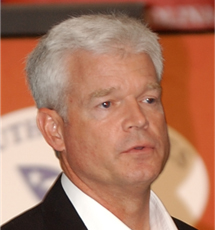
Director, Exascale Computing Project
Oak Ridge National Laboratory
Douglas B. Kothe (Doug) has over three decades of experience in conducting and leading applied R&D in computational applications designed to simulate complex physical phenomena in the energy, defense, and manufacturing sectors. Doug is currently the Director of the Exascale Computing Project (ECP). Prior to that, he was Deputy Associate Laboratory Director of the Computing and Computational Sciences Directorate (CCSD) at Oak Ridge National Laboratory (ORNL). Other prior positions for Doug at ORNL, where he has been since 2006, include Director of the Consortium for Advanced Simulation of Light Water Reactors, DOE's first Energy Innovation Hub (2010-2015), and Director of Science at the National Center for Computational Sciences (2006-2010).
Before coming to ORNL, Doug spent 20 years at Los Alamos National Laboratory, where he held a number of technical and line and program management positions, with a common theme being the development and application of modeling and simulation technologies targeting multi-physics phenomena characterized in part by the presence of compressible or incompressible interfacial fluid flow. Doug also spent one year at Lawrence Livermore National Laboratory in the late 1980s as a physicist in defense sciences.
Doug holds a Bachelor in Science in Chemical Engineering from the University of Missouri Columbia (1983) and a Masters in Science (1986) and Doctor of Philosophy (1987) in Nuclear Engineering from Purdue University.
The U.S. Department of Energy Exascale Computing Project
The U.S. Department of Energy (DOE) is a long-time leader in the development and use of high-performance computing (HPC). HPC-based modeling and simulation is vital to the execution of DOE missions in science and engineering and to stewardship of the nation's nuclear stockpile. Sustained investment has supported the development of increasingly powerful HPC systems and produced substantial benefits for the United States. To maintain leadership and to address future challenges in national security, science, energy, and health, the United States is making a strategic move in HPC via the Exascale Computing Project (ECP) a grand convergence of advances in modeling and simulation, data analytics, machine learning, and artificial intelligence. Arising out of this convergence will be new approaches to predictive analysis for scientific discovery and stockpile stewardship, new means of addressing the sobering threat posed by the rapidly growing capabilities of potential adversaries to use advanced defensive systems, and new solutions to complex data-driven engineering problems. ECP is focused on accelerating the delivery of a capable exascale computing ecosystem to provide breakthrough solutions that can address our most critical challenges in scientific discovery, energy assurance, economic competitiveness, and national security. The project is a joint effort of two DOE organizations: the Office of Science (SC) and the National Nuclear Security Administration (NNSA). ECP's work encompasses the development of applications, software technologies, and hardware technologies and architectures. This work is carried out by teams that leverage the diverse capabilities of the DOE national laboratories, universities, and industry. These teams are delivering advances in all three areas, which will be highlighted along with the technical challenges that must be overcome for ECP success.
Brian O'Shea
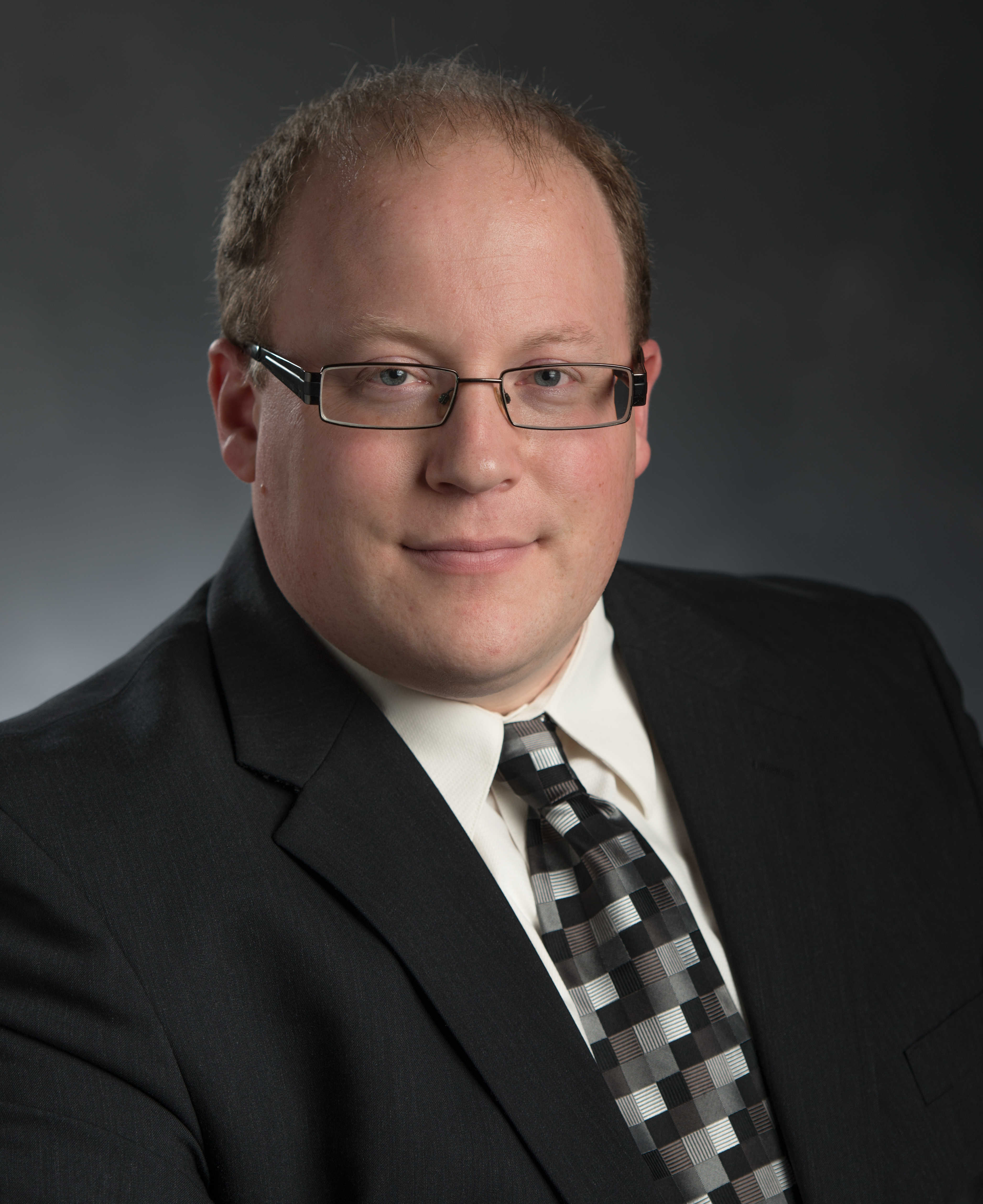
Michigan State University
Brian O'Shea received his B.S. in Engineering Physics at the University of Illinois in Urbana-Champaign (UIUC) in 2000, and his PhD in physics from UIUC in 2005 (with 2002-2005 being spent as a graduate student in residence at the Laboratory for Computational Astrophysics at UC San Diego and in the Theoretical Astrophysics Group at Los Alamos National Laboratory). Following that, he was a Director's Postdoctoral Fellow at Los Alamos National Laboratory, with a joint appointment between the Theoretical Astrophysics Group and the Applied Physics Division. Since 2008, he has been a member of the faculty at Michigan State University, with a joint appointment between the Department of Computational Mathematics, Science and Engineering (2015-present), the Department of Physics and Astronomy (2008-present), and the National Superconducting Cyclotron Laboratory (2014-present). From 2008-2015, Dr. O'Shea was a member of Lyman Briggs College. Dr. O'Shea is a computational and theoretical astrophysicist studying cosmological structure formation, including galaxy formation and the behavior of the hot, diffuse plasma within galaxy clusters. He is also a co-author of the Enzo AMR code, an expert in high performance computing, and an advocate for open-source computing and open-source science. He has authored or co-authored over 50 peer-reviewed journal articles in astrophysics, computer science, and education research journals, and has received a variety of awards for his teaching and public outreach efforts.
Exploring the Universe with Blue Waters
Astronomy, astrophysics, and space sciences are fields that are inundated with data, and involve physical phenomena that are complex and cannot be explored via experiments on Earth. As a result, sophisticated simulation tools are required to make theoretical progress in understanding these phenomena, and large-scale computing is required to both analyze observational data and to execute the necessary simulations. Blue Waters has been one of the forefront instruments for making progress in these fields in the past few years due to both its unique capabilities and its large size. In this talk, I will highlight some of the most important advances made in astronomy, astrophysics, and space sciences using Blue Waters, including a variety of figures and animations contributed by the user community.
Watch the presentation | View the presentation slides (PDF)
Irene Qualters
National Science Foundation
Thomas Schulthess

Swiss National Supercomputing Centre (CSCS)
Thomas Schulthess holds a chair for computational physics at ETH Zurich and directs the Swiss National Supercomputing Centre (CSCS) in Lugano since fall of 2008. Here received his PhD in 1994 from ETH Zurich and spent many years at Oak Ridge National Laboratory, where today he holds a Visiting Distinguished Scientists appointment. While his primary research is on computational methods for materials science, as CSCS Director he has taken interest in developing energy efficient computing systems for climate modeling and meteorology. Thomas led the teams that won the ACM Gordon Bell Prizes in 2008 and 2009 with the first production-level applications that sustained a petaflop, and in 2016 along with MeteoSwiss won the Swiss ICT Award for outstanding IT-based projects and services.
Reflecting on the Goal and Baseline for Exasacle Computing
Application performance is given much emphasis in discussions of exascale computing. A 50-fold increase in sustained performance over today's applications running on multi-petaflops supercomputing platforms should be the expected target for exascale systems deployed early next decade. In the present talk, we will reflect on what this means in practice and how much these exascale systems will advance the state of the art. Experience with today's platforms show that there can be an order of magnitude difference in performance within a given class of numerical methods, depending only on choice of architecture and implementation. This bears the questions on what our baseline is, over which the performance improvements of exascale systems will be measured. Furthermore, how close will these exascale systems bring us to deliver on scientific goals, such as convection resolving global climate simulations or throughput oriented computations for meteorology?
Watch the presentation | View the presentation slides (PDF)
Bill Kramer and Lizanne DeStefano
Presenting "Seeing the Beginning of Time" and "Grand Journey to Understand the Universe" — CADENS documentary co-productions
Dr. Bill Kramer and Dr. Lizanne DeStefano will introduce the 50-minute 4K documentary "Seeing the Beginning of Time" distributed internationally through multiple channels including Amazon Prime and partially-funded under the NSF project the Centrality of Advanced Digitally-ENabled Science (CADENS).
"Seeing the Beginning of Time" is a major 4K online documentary production that tells the story of how and why researchers are forging giant new telescopes, while marshaling vast computational power in one of the most far-reaching efforts to study the cosmos. These advanced technologies are part of a historic quest: to peer into space and time, to find out how the universe gave birth to galaxies and planets, to discern the amazing world of gravity and to test theories by Einstein and other scientists
The documentary includes data visualizations from Blue Waters science teams. Two of these data visualizations won first and second place in the SC17 Data Analytics and Visualization Showcase.
Dr. Kramer and Dr. DeStefano will also present the companion 6-minute video "Grand Journey to Understand the Universe" featuring Dr. Josh Frieman, Director of the Dark Energy Survey (DES), who articulates the scientific quest, the search for gravity, and connects computational science to challenges in survey science.
The CADENS project primary goal is to increase digital literacy and raise public awareness about the significance of computational and digitally enabled science. CADENS has co-produced a series of documentaries that feature data visualizations while telling stories about major scientific challenges. CADENS is led by Dr. Donna Cox, director of the Advanced Visualization Laboratory (AVL) at the National Center for Supercomputing Applications, University of Illinois at Urbana-Champaign. CADENS co-investigators are Dr. Bill Kramer, Blue Waters Project Director; John Towns, XSEDE Principal Investigator; veteran science writer Thomas Lucas; and Robert Patterson, AVL Research Programmer. Dr. Lizanne DeStefano is the leader of the CADENS external evaluation program. AVL develops data visualizations that inform CADENS productions that include fulldome planetarium shows and international online productions.
"Seeing the Beginning of Time" features NCSA Research Scientist and Astronomy Research Professor Felipe Menanteau and his colleagues from the Dark Energy Survey (DES), an international collaboration dedicated to charting the expansion of our universe. NCSA, along with Fermilab and the National Optical Astronomy Observatory are the founding institutions for the Dark Energy Survey. Menanteau and colleagues are using light from distant galaxies to study the distribution of matter in the universe. NCSA leads data management for the DES project, receiving large volumes of observations over high-speed networks from the telescope in Chile and using the Blue Waters supercomputer to review, process and release the data products. The DES project is a pathfinder for the next generation of surveys, the Large Synoptic Survey Telescope (LSST).
"Seeing the Beginning of Time" is circulating internationally on Amazon Prime and Amazon Video with commercials. CADENS provides the documentary to academics and educators at no cost. All data visualizations produced under CADENS are open and available at the NCSA CADENS website. To find out more, please contact CADENS Dr. Donna Cox at donnacox@illinois.edu.

